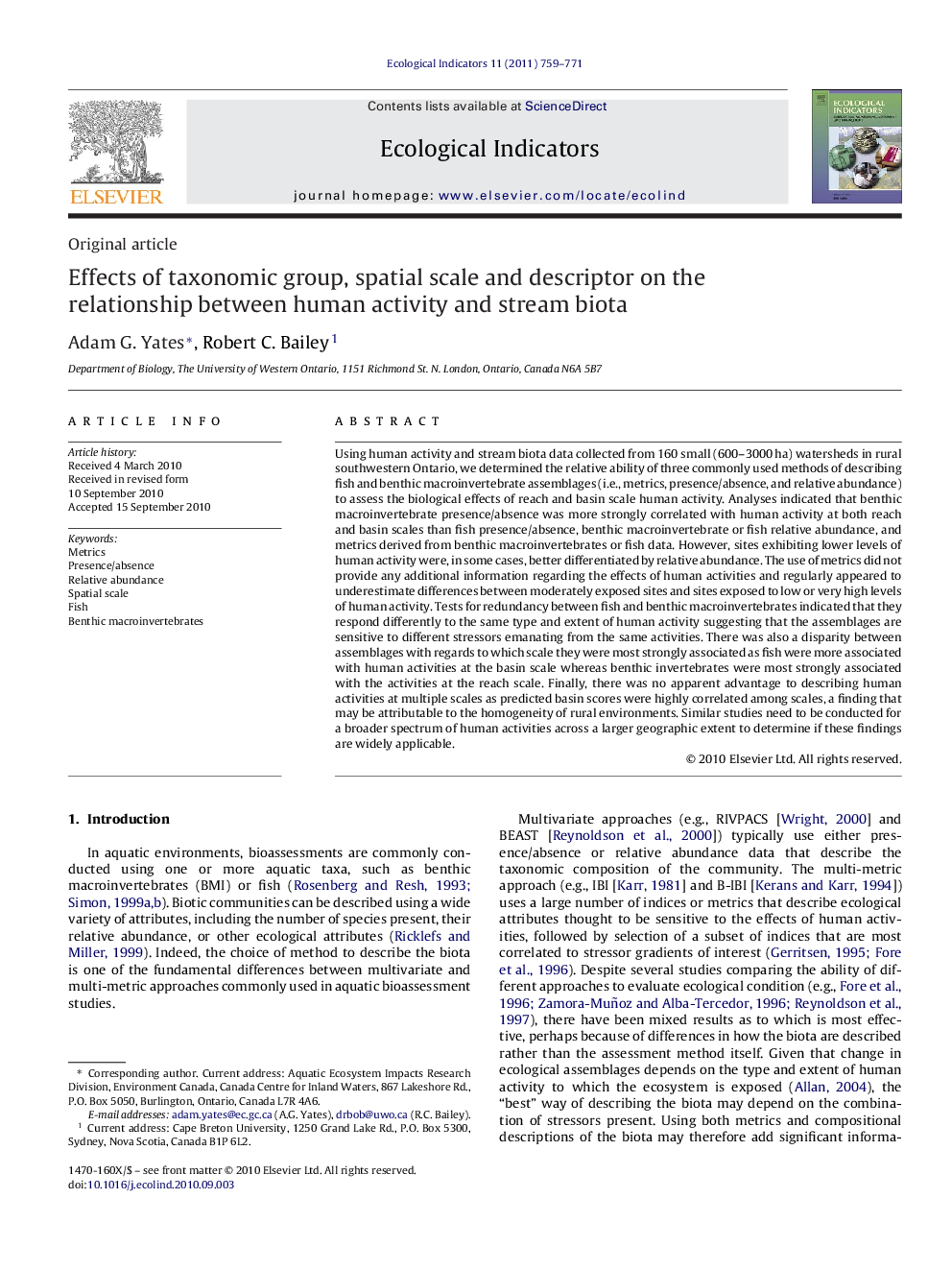| Article ID | Journal | Published Year | Pages | File Type |
|---|---|---|---|---|
| 6295676 | Ecological Indicators | 2011 | 13 Pages |
Abstract
Using human activity and stream biota data collected from 160 small (600-3000Â ha) watersheds in rural southwestern Ontario, we determined the relative ability of three commonly used methods of describing fish and benthic macroinvertebrate assemblages (i.e., metrics, presence/absence, and relative abundance) to assess the biological effects of reach and basin scale human activity. Analyses indicated that benthic macroinvertebrate presence/absence was more strongly correlated with human activity at both reach and basin scales than fish presence/absence, benthic macroinvertebrate or fish relative abundance, and metrics derived from benthic macroinvertebrates or fish data. However, sites exhibiting lower levels of human activity were, in some cases, better differentiated by relative abundance. The use of metrics did not provide any additional information regarding the effects of human activities and regularly appeared to underestimate differences between moderately exposed sites and sites exposed to low or very high levels of human activity. Tests for redundancy between fish and benthic macroinvertebrates indicated that they respond differently to the same type and extent of human activity suggesting that the assemblages are sensitive to different stressors emanating from the same activities. There was also a disparity between assemblages with regards to which scale they were most strongly associated as fish were more associated with human activities at the basin scale whereas benthic invertebrates were most strongly associated with the activities at the reach scale. Finally, there was no apparent advantage to describing human activities at multiple scales as predicted basin scores were highly correlated among scales, a finding that may be attributable to the homogeneity of rural environments. Similar studies need to be conducted for a broader spectrum of human activities across a larger geographic extent to determine if these findings are widely applicable.
Related Topics
Life Sciences
Agricultural and Biological Sciences
Ecology, Evolution, Behavior and Systematics
Authors
Adam G. Yates, Robert C. Bailey,
